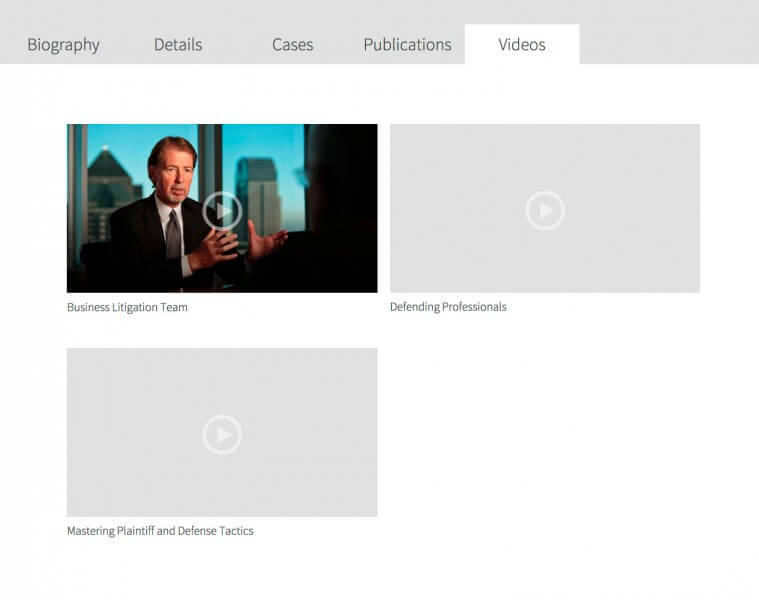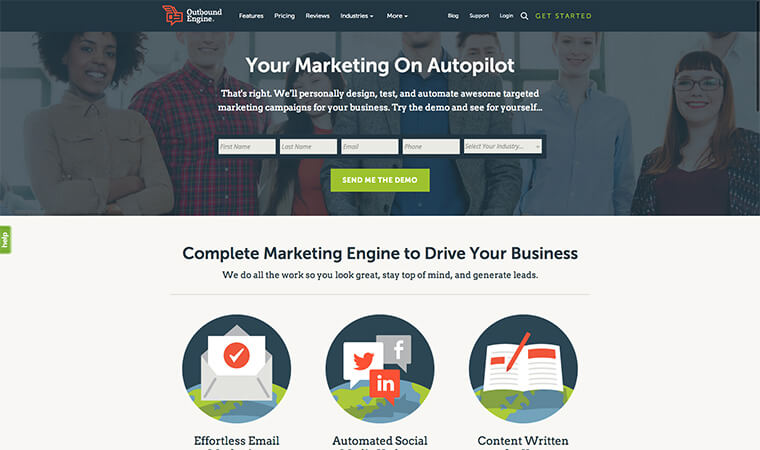Advanced Custom Fields is one of the most popular methods of creating metaboxes. It provides a simple visual interface for creating the metaboxes, and the resulting metaboxes look great and are easy for clients to edit.
ACF also includes a bunch of functions you can use in your theme to retrieve the values of the meta fields. But I recommend you don’t use these.
For some fields like images, this will introduce additional database queries. See the comment below where switching from ACF functions to the WP core function decreased database queries from 146 to 22!
There’s is no reason to use an ACF function like get_field() when you can use a WordPress core function like get_post_meta(). Using these ACF functions introduces what I’m calling “frontend dependency”.
If you use an ACF field and the ACF plugin is removed or deactivated (because clients…), visitors to the website will see the white screen of death instead of the website. If you go to the bother of wrapping all the ACF functions in function_exists(), the site will load but none of your metadata will be shown.
But the metadata still exists in the WordPress database. If you had used WordPress functions, there would be no changes to the frontend of the website. On the backend the metaboxes would be gone so they couldn’t edit those fields (unless they use the WP built-in Custom Fields metabox), but this is a much less serious issue than a broken website.
I’ve also found that ACF can cause performance issues on the frontend, even if you’re not using their fields. You can add this code to prevent the plugin from loading on the frontend.
This works fine for simple fields, but it might not be clear how the more complex fields are stored in the database. I’ll walk you through some examples.
Repeating Fields
On this page, as many videos can be included as they like (or none at all). I’m using a repeater field which includes a Title, Video URL and Thumbnail (sample fields).

In your theme, if you look at the meta field for the repeater field ( get_post_meta( get_the_ID(), 'be_attorney_video', true ); ), it will give you the number of items within that field. You can then loop through and access all of them. Here’s how I’m assembling those videos:
| <?php | |
| $videos = get_post_meta( get_the_ID(), 'be_attorney_video', true ); | |
| if( $videos ) { | |
| for( $i = 0; $i < $videos; $i++ ) { | |
| $title = esc_html( get_post_meta( get_the_ID(), 'be_attorney_video_' . $i . '_title', true ) ); | |
| $video = esc_url( get_post_meta( get_the_ID(), 'be_attorney_video_' . $i . '_video', true ) ); | |
| $thumbnail = (int) get_post_meta( get_the_ID(), 'be_attorney_video_' . $i . '_thumbnail', true ); | |
| // Thumbnail field returns image ID, so grab image. If none provided, use default image | |
| $thumbnail = $thumbnail ? wp_get_attachment_image( $thumbnail, 'be_video' ) : '<img src="' . get_stylesheet_directory_uri() . '/images/default-video.png" />'; | |
| // Displayed in two columns, so using column classes | |
| $class = 0 == $i || 0 == $i % 2 ? 'one-half first' : 'one-half'; | |
| // Build the video box | |
| echo '<div class="' . $class . '"><a href="' . $video . '">' . $thumbnail . '</a>' . $title . '</div>'; | |
| } | |
| } |
This snippet also shows you how to use ACF image fields. They store the image ID, so you can get the actual image markup using wp_get_attachment_image( $image_id, 'image_size' );.
Flexible Content
In my last post I described setting up the HTML markup for Full Width Landing Pages. This section is a bit like “Part 2” of that post, since almost every page I set up in that way I’m using ACF’s Flexible Content field to populate the content area.

Flexible Content allows you to create different layouts, which are collections of fields. For instance, a Testimonial layout might have fields for Quote, Person’s Name, and a Photo. A website editor can then create a page by assembling these layouts in whatever order they like, and use them as many times as they like.
Take a look at the OutboundEngine homepage. The header contains a menu and call to action (graphic, text and form). The footer is the dark blue part at the bottom starting with “Sign up and watch your business grow”. Everything in between is the flexible content area. This page is made up of the following layouts: Features, Small Quote, Full Width Content, and Full Width Content.
For this example, my Flexible Content field has a name (meta_key) of ‘be_content’. I have two layouts: full width content (fields: title and content) and content with image (fields: title, content, image). Assuming you set up your page template like I did in my Full Width Landing Pages tutorial, this would be your template-landing.php file:
| <?php | |
| /** | |
| * Your Child Theme | |
| * | |
| * Template Name: Landing | |
| */ | |
| /** | |
| * Flexible Content | |
| * | |
| */ | |
| function be_landing_page_content() { | |
| $rows = get_post_meta( get_the_ID(), 'be_content', true ); | |
| foreach( (array) $rows as $count => $row ) { | |
| switch( $row ) { | |
| // Full Width Content layout | |
| case 'full_width_content': | |
| $title = esc_html( get_post_meta( get_the_ID(), 'be_content_' . $count . '_title', true ) ); | |
| $content = get_post_meta( get_the_ID(), 'be_content_' . $count . '_content', true ); | |
| echo '<div class="flex-content full-width-content"><div class="wrap">'; | |
| if( $title ) | |
| echo '<h2>' . $title . '</h2>'; | |
| if( $content ) | |
| echo '<div class="section-content">' . apply_filters( 'the_content', $content ) . '</div>'; | |
| echo '</div></div>'; | |
| break; | |
| // Content with Image layout | |
| case 'content_with_image': | |
| $title = esc_html( get_post_meta( get_the_ID(), 'be_content_' . $count . '_title', true ) ); | |
| $content = get_post_meta( get_the_ID(), 'be_content_' . $count . '_content', true ); | |
| $image = get_post_meta( get_the_ID(), 'be_content_' . $count . '_image', true ); | |
| echo '<div class="flex-content content-with-image"><div class="wrap">'; | |
| if( $title ) | |
| echo '<h2>' . $title . '</h2>'; | |
| if( $image ) | |
| echo '<div class="section-image">' . wp_get_attachment_image( $image, 'medium' ) . '</div>'; | |
| if( $content ) | |
| echo '<div class="section-content">' . apply_filters( 'the_content', $content ) . '</div>'; | |
| echo '</div></div>'; | |
| break; | |
| } | |
| } | |
| } | |
| add_action( 'be_content_area', 'be_landing_page_content' ); | |
| // Remove 'site-inner' from structural wrap | |
| add_theme_support( 'genesis-structural-wraps', array( 'header', 'footer-widgets', 'footer' ) ); | |
| // Build the page | |
| get_header(); | |
| do_action( 'be_content_area' ); | |
| get_footer(); |
The ‘be_content’ meta field will be an array of layouts used on this page, in order. The fields in each layout will be stored based on that order. So if you have a field named ‘title’ and it’s in the first layout on the page, it will be stored as ‘be_content_0_title’ (counting starts at 0, so the first one is 0).
Options Pages
Metaboxes you add to options pages will store data as options instead of post meta. It will be the meta_key you specify, prefixed with ‘options_’. So, if you had an options page with a Call to Action box (sample fields), you would access those fields like this:
| <?php | |
| function be_call_to_action() { | |
| $title = esc_html( get_option( 'options_be_cta_title' ) ); | |
| $button_text = esc_html( get_option( 'options_be_cta_button_text' ) ); | |
| $button_url = esc_url( get_option( 'options_be_cta_button_url' ) ); | |
| if( $title && $button_text && $button_url ) | |
| echo '<div class="call-to-action"><div class="wrap"><p>' . $title . '</p><p><a href="' . $button_url . '" class="button">' . $button_text . '</a></p></div></div>'; | |
| } | |
| add_action( 'genesis_before_footer', 'be_call_to_action' ); |
Term Metadata
Let’s say you added a Subtitle field to categories (sample fields). ACF stores these as options as well, with the following format: [taxonomy]_[term_id]_[field name]
So with a field name of ‘be_subtitle’, you’d use the following to access it on a category archive page:
| <?php | |
| /** | |
| * Category Subtitle | |
| * | |
| */ | |
| function be_category_subtitle() { | |
| // Make sure this is a category archive | |
| if( ! is_category() ) | |
| return; | |
| $category = get_term_by( 'slug', get_query_var( 'category_name' ), 'category' ); | |
| $subtitle = esc_html( get_option( 'category_' . $category->term_id . '_be_subtitle' ) ); | |
| if( $subtitle ) | |
| echo '<p class="subtitle">' . $subtitle . '</p>'; | |
| } | |
| add_action( 'genesis_before_loop', 'be_category_subtitle' ); |
Kresimir Katusic says
Thx Erickson for this tips about replacing ACF from frontend.
I removed all functions from ACF and disable that plugin on frontend but it still running some queries due update_meta_cache function run. For example if you open archive or category page it will run its queries. I didn’t find solution to disable it, maybe some hook is involved whe WP run get_posts() function or get_terms function I don’t know.
Also tried this, because someone mentioned update_meta_cache() fires that ACF queries:
function all_queries( $query ) {
$query->set( ‘update_post_meta_cache’, false );
$query->set( ‘update_post_term_cache’, false );
}
add_action( ‘pre_get_posts’, ‘all_queries’ );
but no luck.
Have you some advice for it?
Thx